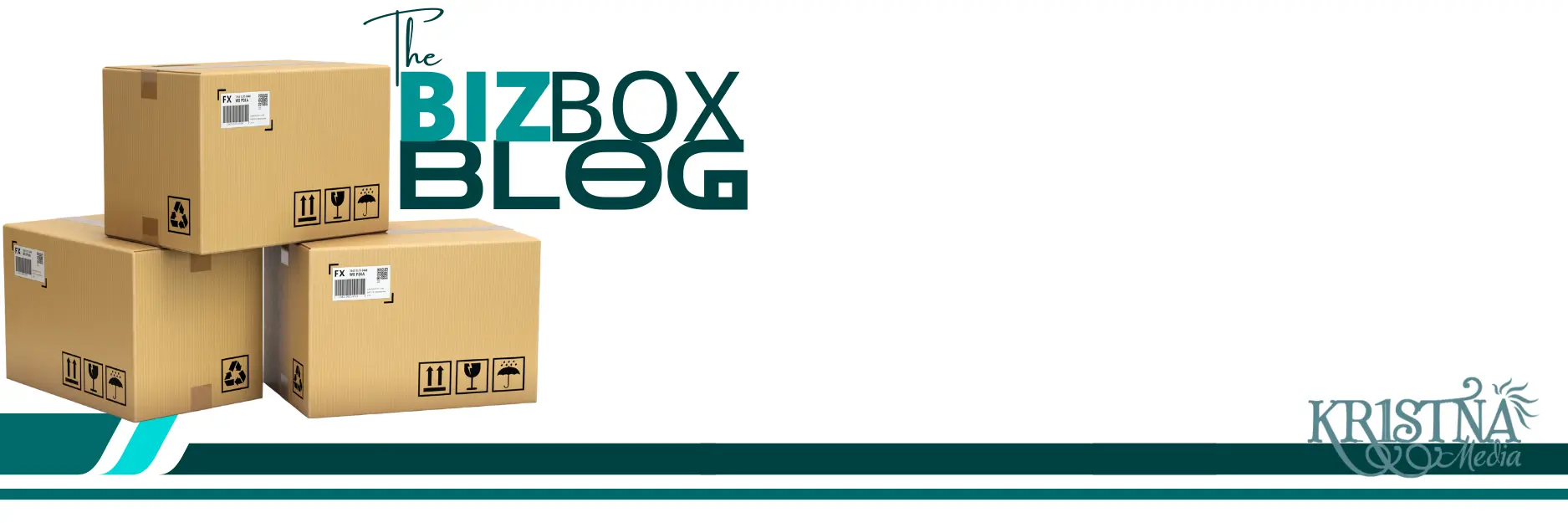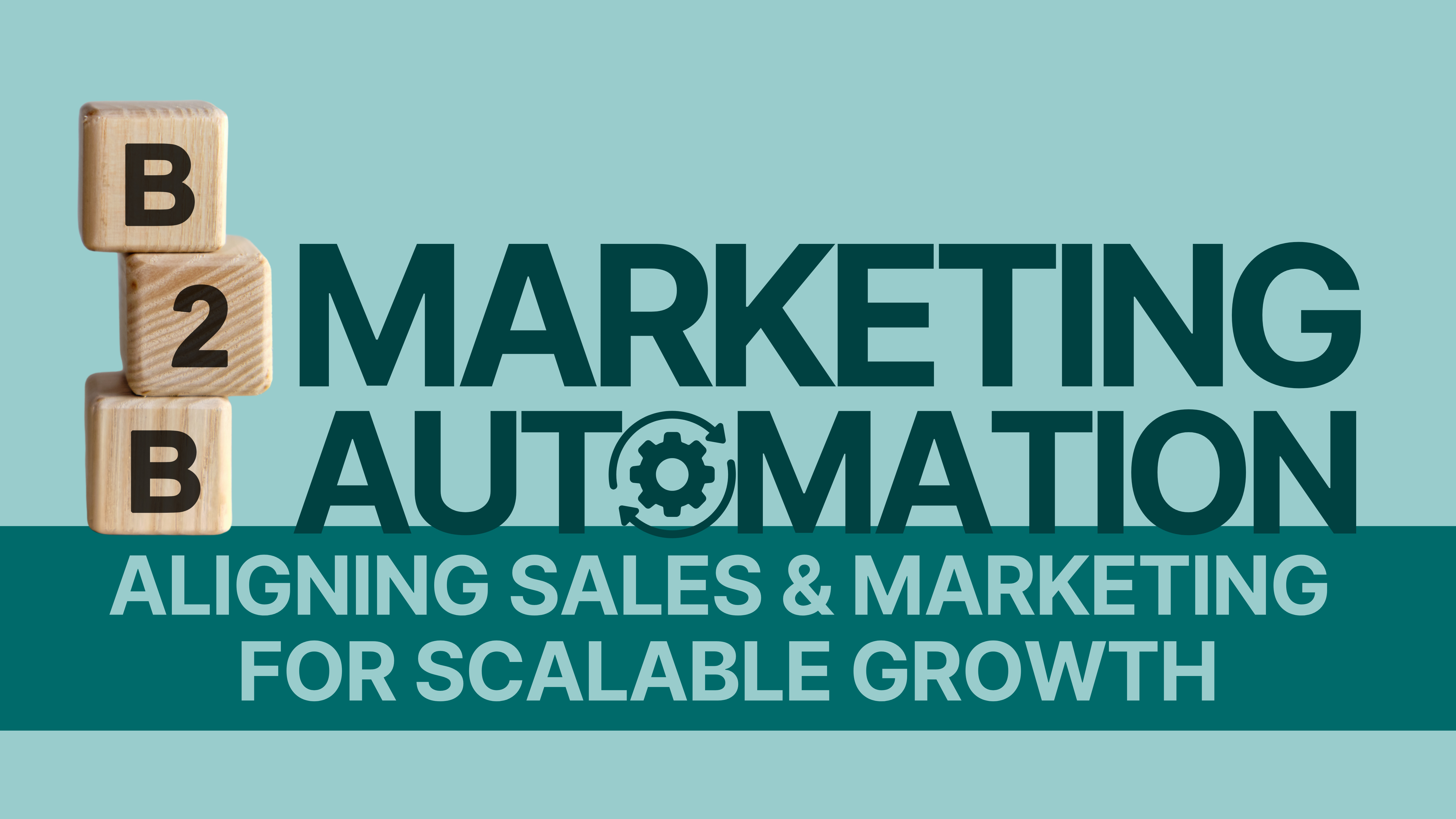80% of B2B Marketing leads never convert into sales due to poor follow-up and misalignment between marketing and sales. If your teams aren’t working together seamlessly, you’re leaving revenue on the table.
For B2B companies, marketing and sales alignment is the difference between a predictable pipeline and a chaotic, inefficient revenue engine. However, many organizations struggle with siloed teams, poor lead hand-offs, and inconsistent reporting.
Marketing automation bridges this gap, ensuring seamless coordination between marketing campaigns and sales processes, improving lead quality, tracking ROI, and optimizing data cleanliness. With platforms like HubSpot Marketing Hub, HubSpot Sales Hub, Salesforce, and Pardot, businesses can integrate marketing and sales efforts into a single, data-driven system.
This article explores how B2B marketing automation optimizes lead generation, CRM automation, the marketing to sales hand-off process, and revenue reporting to drive sustained business growth.
Why B2B Companies Struggle with Sales & Marketing Alignment
The disconnect between B2B marketing and sales is one of the biggest challenges in B2B. Marketing and sales teams are often measured by different success metrics, which can create internal conflicts. Marketing teams focus on generating leads, while sales teams prioritize closing deals. Without automation, this disconnect results in marketing handing over leads that aren’t sales-ready or sales failing to follow up quickly on high-intent prospects.
A common example is when a company launches a paid LinkedIn campaign that drives traffic to a whitepaper. Marketing celebrates a high download rate, but sales dismisses these leads as unqualified because they haven’t requested a demo. Marketing automation bridges this gap by tracking lead activity and ensuring that only prospects who engage beyond a surface-level download are handed off to sales. When teams operate in silos:
❌ Leads get lost – Marketing generates MQLs, but sales isn’t notified in time.
❌ Inconsistent messaging – Sales and marketing campaigns don’t sync, confusing prospects.
❌ Poor tracking & attribution – It’s unclear which marketing efforts drive revenue.
❌ Data inefficiencies – Duplicate records, outdated contact info, and missing engagement data hinder decision-making.
B2B marketing automation solves these pain points by integrating CRM, sales automation, and marketing workflows into a single, optimized system.
How Marketing Automation Aligns Sales & Marketing
1. Why Sales & Marketing Need to Share Data: The CRM Automation Fix
One of the most frustrating challenges for B2B companies is the lack of visibility into the sales pipeline. When marketing and sales teams use separate data sources, it leads to miscommunication, missed opportunities, and inaccurate forecasting.
For example, a B2B SaaS company might generate hundreds of leads from webinars and email campaigns, but without CRM automation, sales reps have no insight into which leads are engaging with content versus those who have lost interest. By integrating B2B marketing and sales platforms like HubSpot CRM or Salesforce, businesses ensure that every lead interaction is tracked, scored, and properly assigned.
A real-world impact of CRM automation can be seen in organizations where manual lead tracking once caused delayed follow-ups—often missing the critical window when a prospect is most interested. With automation, sales reps receive instant notifications when a lead engages with a pricing page, allowing them to reach out at the right time, increasing conversion rates. For sales and marketing teams to work together, they must operate from the same data source. CRM automation ensures that both teams have real-time access to:
✔️ Lead activity tracking – Every email open, webinar registration, and content download is recorded in the CRM.
✔️ Automated lead qualification – Marketing Qualified Leads (MQLs) automatically convert into Sales Qualified Leads (SQLs) when they meet criteria.
✔️ Cross-team visibility – Marketing sees what happens after lead hand-off; sales sees full engagement history.
Best Platforms for CRM Automation:
- HubSpot Marketing Hub + HubSpot Sales Hub (seamless automation from lead to deal)
- Salesforce + Pardot (ideal for enterprise-level B2B automation)
💡 Example: A SaaS company uses HubSpot CRM to automatically log every lead’s interaction with emails, landing pages, and webinars. Sales reps receive real-time notifications when a high-value lead requests a demo.
2. Automating the Marketing to Sales Hand-Off Process
For many companies, the marketing to sales handoff is where revenue opportunities fall apart. Marketing generates a steady flow of leads, but sales often complains that these leads aren’t qualified, leading to low engagement rates and wasted effort.
Imagine a cloud security provider running targeted PPC campaigns that generate hundreds of MQLs every month. However, if these leads are passed to sales too soon—before they’ve shown real buying intent—sales reps spend time pursuing people who aren’t ready to make a decision. This inefficiency leads to longer sales cycles, wasted outreach efforts, and frustrated teams.
By automating lead qualification criteria, companies can ensure that leads only become SQLs when they’ve taken meaningful actions—such as attending a webinar, requesting a product demo, or engaging with high-value content. This structured approach allows sales teams to focus their time on warm leads that have a higher probability of converting. One of the biggest breakdowns in B2B sales happens at the lead hand-off stage. Without automation, leads sit untouched in marketing’s pipeline, or worse—sales pursues leads that aren’t ready.
Marketing automation fixes this by:
✔️ Setting lead qualification criteria – Sales only receives SQLs who meet predefined engagement and intent thresholds.
✔️ Auto-assigning leads – When a prospect becomes sales-ready, they are automatically routed to the correct rep.
✔️ Triggering follow-ups – If a lead requests a quote, they instantly receive an automated response before a rep reaches out.
Best Practices for Hand-Off Automation:
🔹 Use lead scoring to filter out unqualified prospects.
🔹 Set up real-time Slack or email alerts when a high-value lead is assigned.
🔹 Integrate B2B marketing and sales dashboards in HubSpot Sales Hub or Salesforce.
💡 Example: A cloud security company running ABM campaigns integrates Pardot with Salesforce, ensuring leads engaging with high-value content are automatically assigned to sales.
3. Improving Lead Scoring & Prioritization
In many B2B industries, time is money, and sales reps can’t afford to spend hours chasing leads that will never convert. Lead scoring ensures that only the most engaged, high-intent prospects make it to the sales team, while automation nurtures colder leads until they’re ready.
Take a B2B FinTech company selling enterprise payment solutions. Their target audience includes CFOs and procurement managers who take weeks or months to evaluate vendors. Without proper lead scoring, sales teams might waste time reaching out to junior finance analysts who downloaded a free guide but have no decision-making power.
With HubSpot Marketing Hub’s automated lead scoring, the system assigns higher scores to leads who visit pricing pages, interact with case studies, and engage in product-related discussions. This means sales reps only focus on prospects with buying intent, increasing efficiency and deal closure rates. Not all leads deserve immediate sales attention. Lead scoring ranks prospects based on their:
✅ Engagement level (e.g., email opens, whitepaper downloads, webinar attendance)
✅ Firmographics (e.g., company size, industry, job title)
✅ Intent signals (e.g., pricing page visits, demo requests)
Automated lead scoring helps sales prioritize the right prospects, increasing efficiency and conversion rates.
Best Platforms for Lead Scoring:
- HubSpot Marketing Hub (easy-to-use lead scoring model)
- Salesforce & Pardot (advanced scoring with AI-driven predictions)
💡 Example: A B2B FinTech firm implements automated lead scoring in HubSpot CRM, ensuring that only high-intent CFOs and procurement managers are passed to sales reps.
4. Proving Marketing ROI: Connecting Campaigns to Sales Performance
A major frustration for B2B marketing teams is the inability to prove their impact on revenue. Sales leaders want tangible proof that marketing efforts are generating pipeline growth, while marketing teams need clear attribution models to understand which campaigns are working.
Without a unified reporting system, companies rely on guesswork, often crediting deals to the last touchpoint while ignoring the multi-touch journey that led to conversion. This results in inefficient budget allocation and missed optimization opportunities.
Consider a B2B AI software company that runs email campaigns, PPC ads, LinkedIn promotions, and in-person events. If they don’t have a centralized reporting dashboard, it’s impossible to determine which touchpoints contribute most to closed deals. By integrating HubSpot Marketing Hub’s multi-touch attribution reports, they gain visibility into the full customer journey, helping them invest in high-performing campaigns. To justify B2B marketing spend, companies need clear visibility into revenue attribution. Marketing automation connects marketing and sales efforts into a single reporting system, tracking:
📊 Lead-to-customer conversion rates – How well are MQLs converting into customers?
📊 Marketing-attributed revenue – Which campaigns generate the highest ROI?
📊 Sales cycle length – How quickly do automation efforts move leads through the funnel?
Best Platforms for ROI Tracking & Reporting:
- HubSpot Marketing Hub (easy-to-use attribution reports)
- Salesforce B2B Analytics (deep insights for enterprise marketing teams)
- Google Analytics + CRM Integration (tracks website-to-sale conversions)
💡 Example: A B2B AI software firm uses HubSpot’s revenue attribution dashboard to see which whitepapers and webinars generate the most SQLs, allowing them to double down on high-performing content.
5. Maintaining Data Cleanliness for Reliable Reporting
B2B companies often overlook data hygiene, assuming that their CRM and B2B marketing automation tools will “self-correct” inconsistencies. But bad data leads to bad decisions—and worse, wasted effort from both marketing and sales teams.
One of the most common issues is duplicate contacts. A prospect might download a whitepaper using their personal email and later request a demo using their work email—creating two separate records. Without automated data scrubbing, sales reps might reach out to the same lead multiple times, creating confusion and damaging credibility.
Another issue is outdated contact information. If a company hasn’t implemented automated data updates, sales teams might be chasing leads who have changed jobs or left their company altogether.
A networking solutions provider faced this challenge when they discovered that nearly 30% of their CRM data was outdated. By using Salesforce Data Loader, they implemented regular data hygiene workflows to merge duplicates, update records, and remove stale leads—ultimately increasing the accuracy of their sales pipeline forecasting. Messy data leads to duplicate contacts, bad reporting, and misaligned sales efforts. Data cleanliness (also called data scrubbing) ensures that marketing and sales automation work with accurate, up-to-date information.
✔️ Merge duplicate contacts – Prevent multiple reps from pursuing the same lead.
✔️ Standardize data entry – Ensure job titles, industries, and company names follow a uniform format.
✔️ Auto-remove inactive leads – Set up workflows to archive stale contacts after a set period.
Best Tools for Data Scrubbing:
- HubSpot CRM (automated duplicate detection)
- Salesforce Data Loader (bulk updates for enterprise data)
💡 Example: A networking solutions provider automates data cleansing workflows in Salesforce, ensuring reps only see up-to-date, high-quality leads in their pipeline.
The Future of B2B Marketing Automation
B2B success isn’t just about generating leads—it’s about ensuring seamless marketing and sales alignment so that every lead is nurtured, qualified, and converted efficiently.
By leveraging marketing automation for CRM integration, lead scoring, automated hand-offs, campaign tracking, and data cleanliness, B2B companies can:
🚀 Increase pipeline velocity – Move leads through the funnel faster.
🚀 Improve marketing and sales collaboration – Eliminate friction between teams.
🚀 Optimize ROI tracking – Justify marketing investments with real-time reporting.
Who, What, Where, When, Why, How of B2B Marketing Automation
Now that we’ve covered the core aspects of marketing automation, let’s break it down further into the fundamental questions B2B companies need to answer.
Who Needs B2B Marketing Automation?
Any B2B company struggling with inefficient lead management, sales and marketing misalignment, and lack of ROI visibility needs marketing automation. This includes:
- Tech & SaaS companies experiencing long sales cycles and needing structured lead nurturing.
- Enterprise organizations with multiple decision-makers and complex sales processes.
- Manufacturers & distributors looking to automate sales pipelines and track multi-touch attribution.
- Professional services firms that rely on a blend of inbound and outbound marketing efforts.
Example Challenge: A cybersecurity SaaS company generates thousands of leads from webinars but has no automated follow-up process. Sales reps manually qualify leads, resulting in slow response times and lost opportunities. Solution: Marketing automation instantly scores leads, triggers follow-up emails, and assigns high-intent prospects to the sales team.
What Does B2B Marketing Automation Actually Do?
Marketing automation connects marketing campaigns and sales campaigns into a unified, data-driven system that:
✔️ Tracks lead engagement across all touchpoints – Emails, landing pages, social interactions, and events.
✔️ Automates lead scoring and hand-offs – Ensures sales only receives qualified leads.
✔️ Aligns messaging across marketing and sales – Reduces friction and increases conversion rates.
✔️ Maintains CRM data cleanliness – Prevents duplicate contacts and incorrect records from clogging pipelines.
✔️ Proves marketing ROI with detailed reporting – Tracks which campaigns contribute directly to revenue.
Example Challenge: A B2B manufacturing company struggles to attribute revenue to marketing efforts. Their CRM lacks tracking for marketing campaigns, and sales teams don’t update lead statuses consistently. Solution: Implementing HubSpot Marketing Hub and Salesforce creates an end-to-end reporting system that tracks every lead’s journey from initial contact to closed deal.
Where Should Marketing Automation Be Applied?
Marketing automation should be integrated across all customer touchpoints to ensure a cohesive buyer experience and maximize sales efficiency.
🔹 Website & Landing Pages – Personalized experiences based on visitor behavior.
🔹 Email Marketing & Nurture Campaigns – Automated follow-ups and drip sequences.
🔹 CRM & Lead Management – Syncing lead data between marketing and sales teams.
🔹 Sales Enablement & Follow-Ups – Automating reminders, call scheduling, and content recommendations.
🔹 Multi-Channel Engagement (LinkedIn, Paid Ads, Retargeting) – Automating outreach while maintaining personalization.
Example Challenge: A B2B consulting firm has strong email engagement but struggles to convert those leads into sales calls. Solution: Automating LinkedIn outreach and retargeting ads based on email interactions increases meeting bookings by 40%.
When Should a B2B Company Invest in Marketing Automation?
The right time to implement marketing automation is when:
- Lead volume is growing, but conversions aren’t. (Marketing is generating leads, but sales isn’t closing them.)
- Sales teams are spending too much time on manual lead qualification. (Reps should focus on high-intent prospects, not sorting through cold leads.)
- Marketing attribution is unclear. (Executives need to see which campaigns drive revenue.)
- CRM data is messy and unmanageable. (Duplicate contacts and inaccurate information hurt productivity.)
Example Challenge: A mid-sized IT solutions provider is generating a lot of traffic and form submissions but has no clear follow-up structure. Solution: Implementing Pardot for automated lead scoring and nurture sequences results in a 32% increase in SQLs over six months.
Why Is Marketing Automation Critical for B2B Success?
Without marketing automation, B2B growth becomes unpredictable. Companies struggle with:
❌ Slow lead response times → Lost revenue opportunities
❌ Disconnected marketing & sales efforts → Misaligned messaging
❌ Unreliable reporting → Lack of insight into what’s working
❌ CRM inefficiencies → Inaccurate pipeline forecasting
Automation solves these issues by creating a scalable, data-driven framework for:
✔️ Lead qualification – Prioritizing high-intent prospects.
✔️ Marketing-to-sales handoffs – Ensuring no lead is left behind.
✔️ ROI tracking – Proving which campaigns generate revenue.
✔️ Data cleanliness – Keeping CRM records up to date.
Example Challenge: A cloud services provider has an expensive sales team but no marketing automation. Reps are chasing unqualified leads, wasting time, and increasing acquisition costs. Solution: Implementing HubSpot Sales Hub streamlines the process, allowing sales reps to focus only on warm leads—reducing wasted time by 50%.
How to Successfully Implement B2B Marketing Automation
A structured approach to automation is crucial for success. Here’s how to get started:
Step 1: Audit Your Current Marketing & Sales Process
- Identify where leads are getting lost.
- Map out the customer journey from MQL to closed deal.
Step 2: Choose the Right Marketing Automation Platform
- For SMBs & Scaling Teams: HubSpot Marketing Hub + HubSpot Sales Hub
- For Enterprise & Complex Sales Cycles: Salesforce + Pardot
Step 3: Define Lead Scoring & Qualification Criteria
- What actions determine when a lead is ready for sales?
- Automate MQL → SQL transitions based on engagement.
Step 4: Integrate Marketing & Sales Dashboards
- Ensure reporting connects campaign performance to closed deals.
- Automate data syncing to maintain CRM hygiene.
Step 5: Optimize & Iterate
- Monitor metrics like lead conversion rates, sales cycle length, and marketing-attributed revenue.
- Adjust workflows, messaging, and automation rules as needed.
Example Challenge: A software company implements HubSpot Sales Hub but struggles with adoption. Solution: Creating an internal training program for sales reps leads to a 3x increase in CRM usage and a 20% faster sales cycle.
Marketing automation isn’t just about saving time—it’s about ensuring every lead is nurtured properly, sales teams focus on high-intent prospects, and revenue growth becomes predictable. Companies that fail to align these efforts will continue to struggle, while those who leverage automation will dominate their industry.
Struggling to Align Sales & Marketing? Let’s Build a Scalable Automation Strategy!
KR1STNA Media specializes in helping B2B companies implement and optimize marketing automation platforms like HubSpot, Salesforce, and Pardot for streamlined, revenue-driving growth.
Let’s build a marketing automation system that connects marketing and sales seamlessly—Contact us today!



